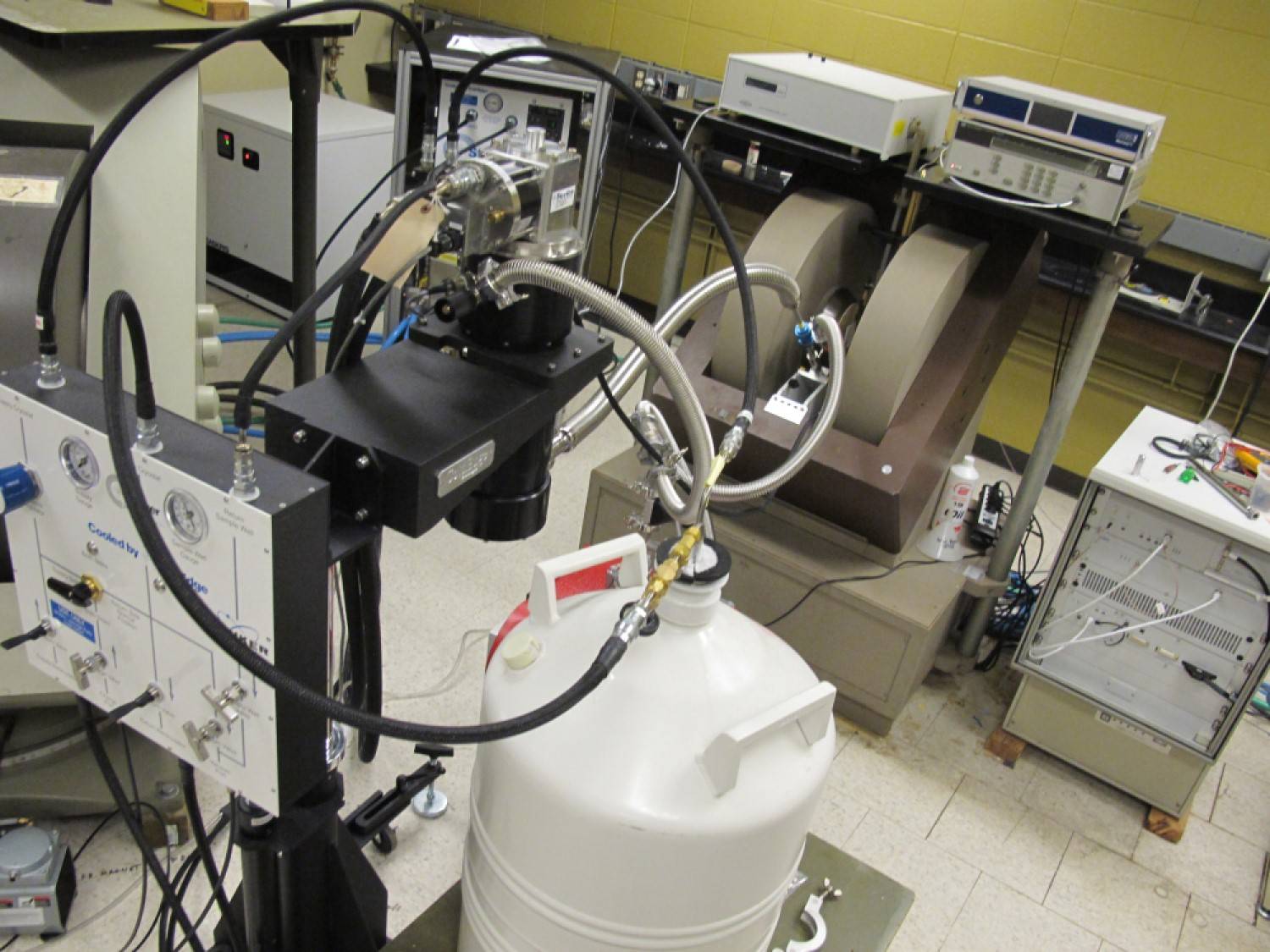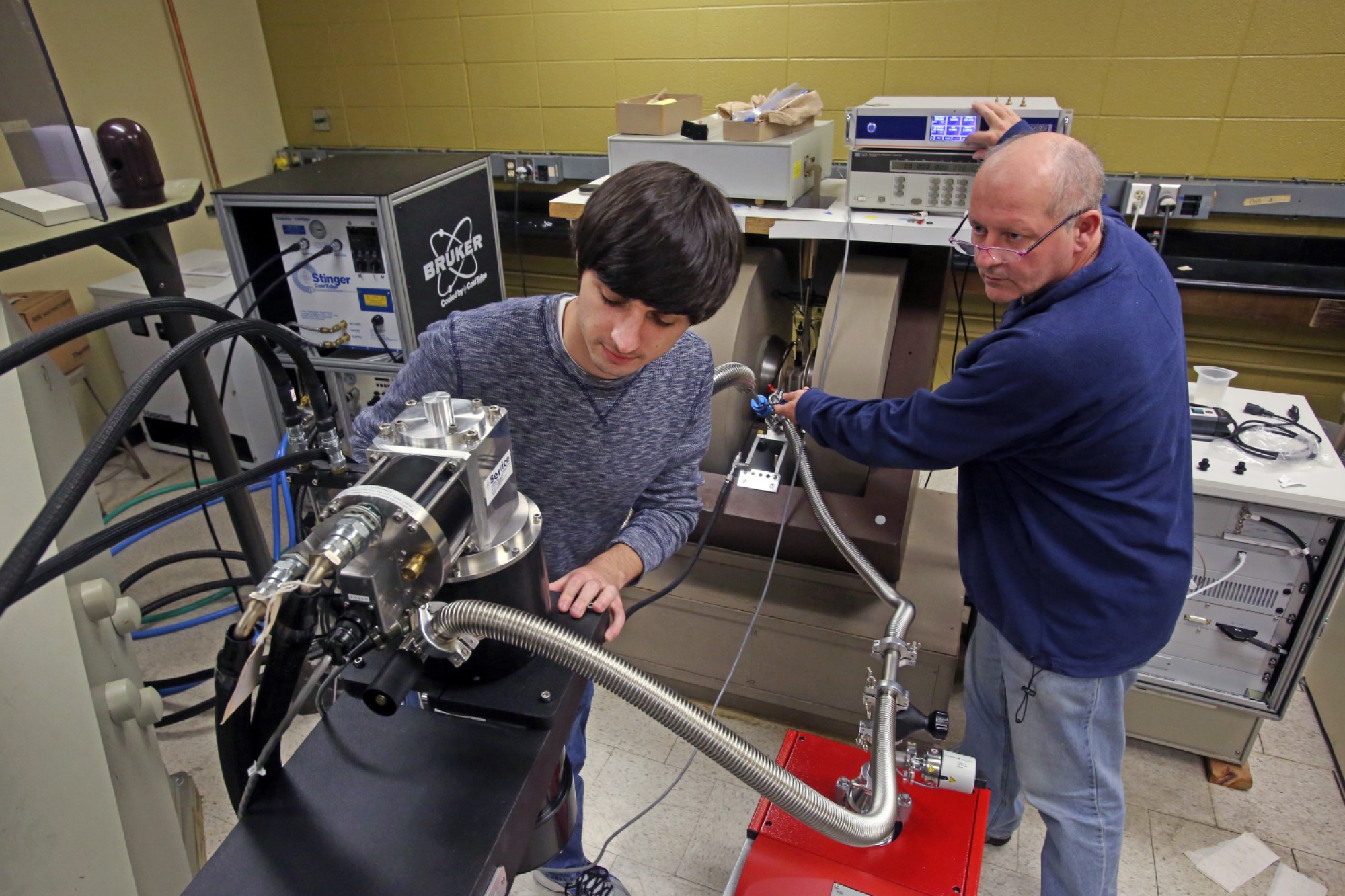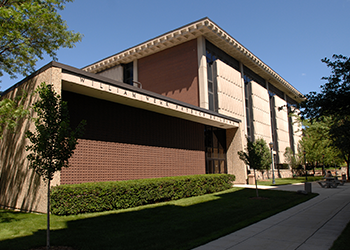Bruker EMX Electron Paramagnetic Resonance (EPR) Spectrometer
For biophysics research, located in WW Physics 028
The Physics Department at Marquette recently took delivery of a research-grade Bruker EMX EPR spectrometer as a result of an agreement between Prof. Emeritus John Karkheck (Physics, Marquette), Prof. Candice S. Klug (Medical College of Wisconsin), and Bruker Biospin.
EPR is a magnetic resonance technique in which the resonant absorption of microwave energy by unpaired electrons occurs upon the application of a magnetic field. The resonant fields for real paramagnetic materials (free radicals, transition ions, lattice defects in minerals, etc.) differ from that of a "free" electron due to interaction with additional fields that result from spin-orbit coupling and from nearby electronic and nuclear spins. Thus, the EPR spectrum provides information on the nature and the environment of the species of interest.
EPR has been used to characterize protein structure, metalloenzyme mechanisms, molecular dynamics, effects of ionizing radiation, exotic materials (e.g. semiconductors, magnetic materials, nanomaterials, fuel cell membranes), and diseased tissue. Key to the utility of EPR is its selectivity for paramagnetic species in otherwise heterogeneous samples. Parameters from detailed simulation of the EPR spectrum can be compared with those predicted by Density Functional Theoretical calculations from structural models and thus used to refine three dimensional structure where other structural techniques are inapplicable.
Dr. Bennett (Physics, Marquette) has 25 years experience with EPR spectroscopy, and the arrival of this powerful methodology at Marquette significantly expands the research opportunities for physics undergraduates, as well as representing an exciting educational tool.






